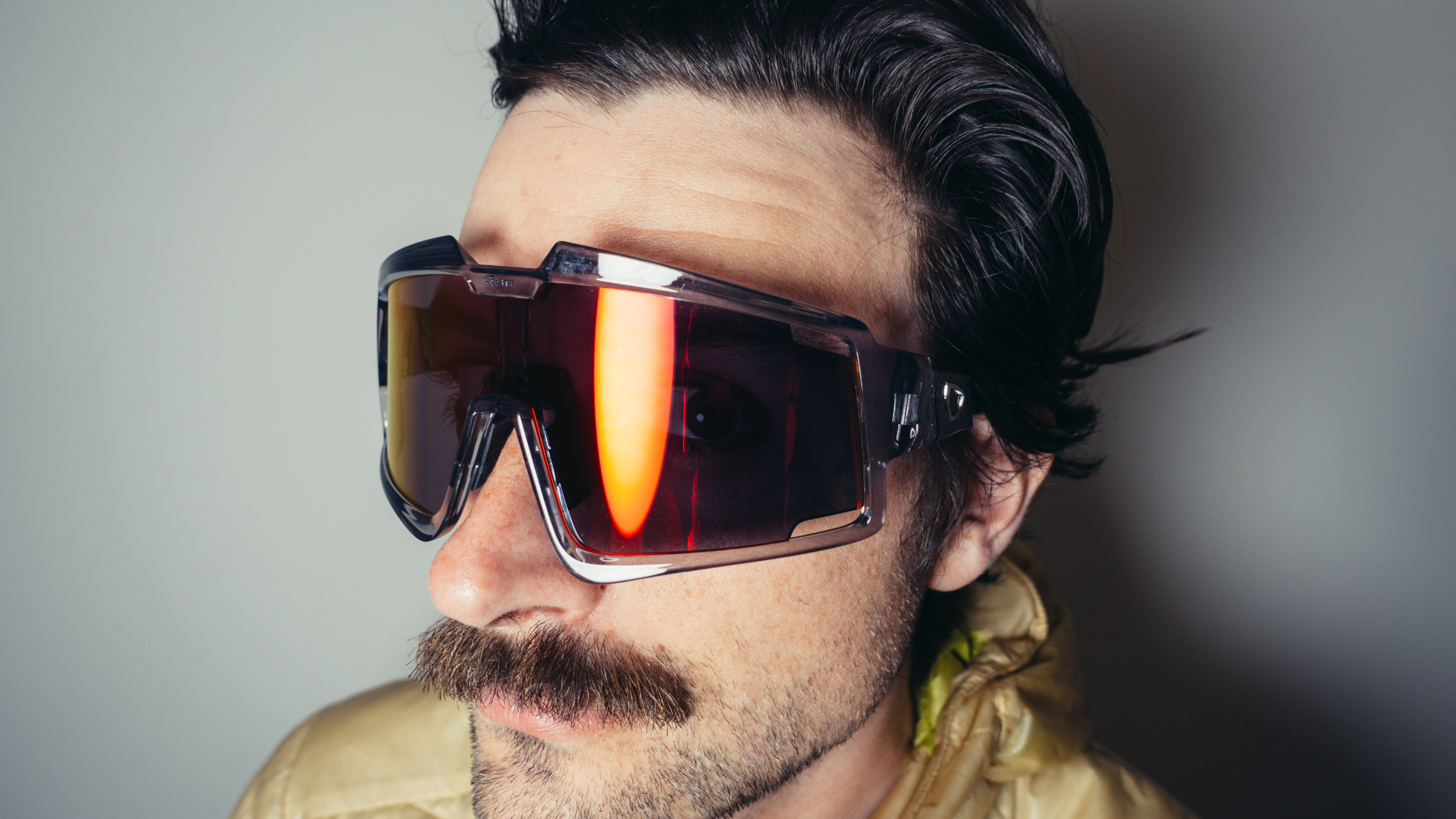
I’ve tried more or less all the best cycling glasses on the market at this point. Winter is obviously a bit of a downtime for cycling glasses testing, and I tend to just chuck a set of clear lenses into something and go from there. The 100% S3 is usually my go-to, but recently I’ve been testing the Shield from Spatz and it’s certainly given more food for thought for winter testing.
The Shield is Spatz’s first foray into the world of cycling glasses, and the brand hasn't half-arsed it. They are massive and sturdy, but unlike most premium glasses that usually either come with just a clear lens or no spare at all, these come with a photochromic option to supplement the main sun lens.
Usually, photochromics don’t do it for me; I find they can’t react fast enough to rapid light changes, and in actual sunlight, they can’t match a dedicated sun lens. Testing the Shield though they really came into their own on overcast days, making them a prime option for spring and autumn rides.

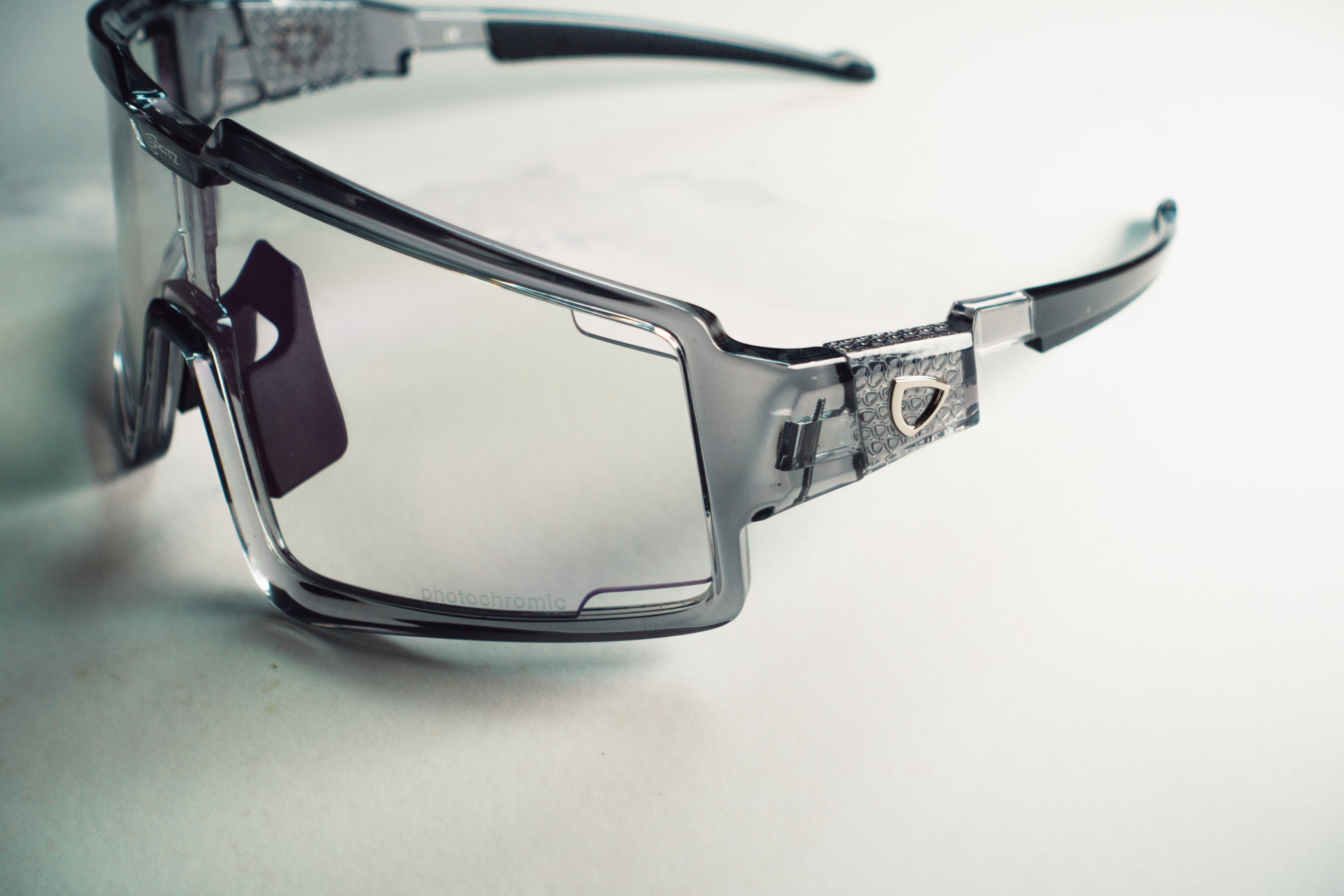
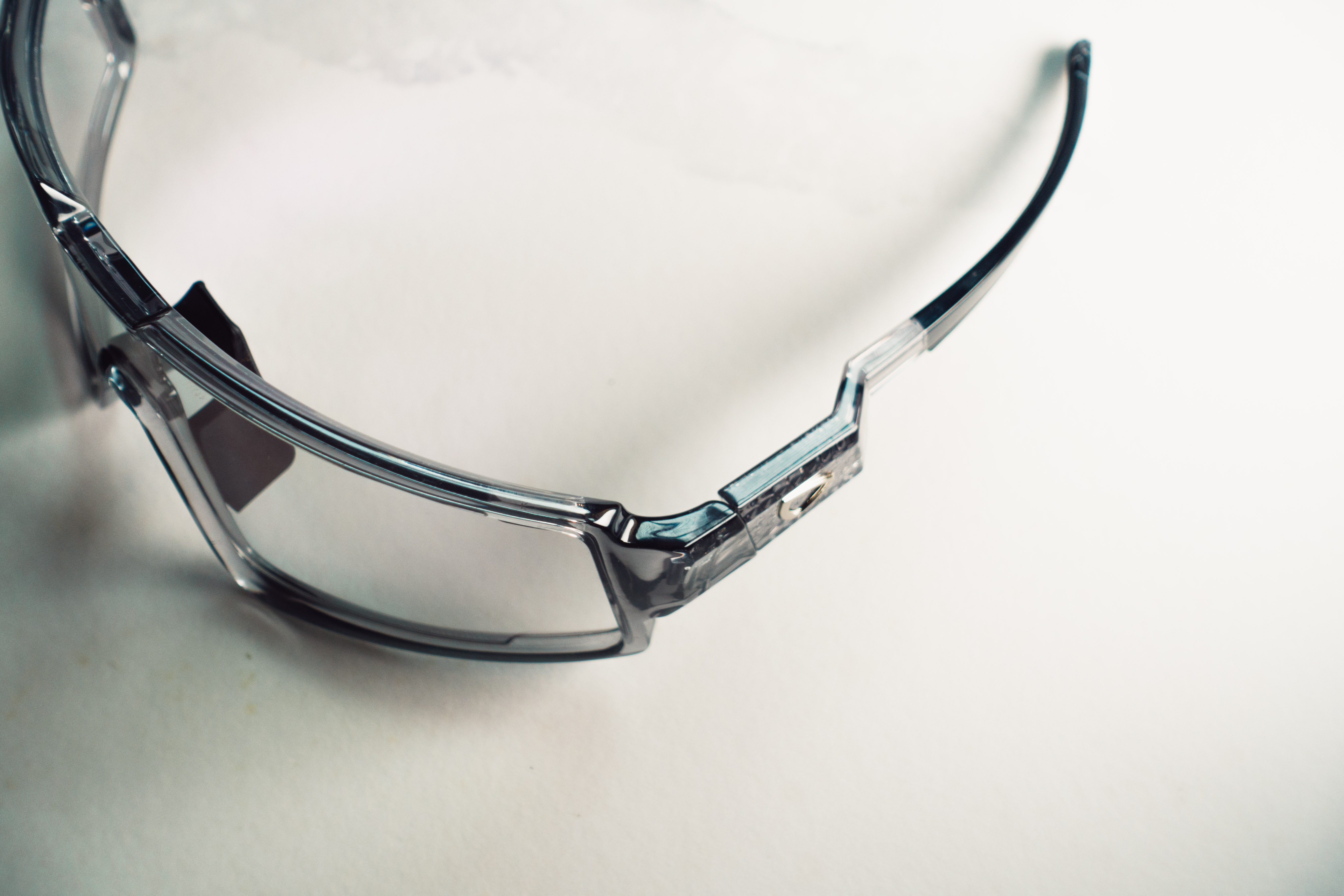
Design and aesthetics
The shield is up there with the biggest of all the cycling glasses I’ve tested. It’s not quite as massive as the POC Devour, but it ain’t far off. The frames, available only in transparent grey, are chunky and angular, and the hinges too are a load thicker than anything else. It’s not so much the height that makes them look big, but the width too. The POC Aspire is a super wide set of glasses, but the Shield is a full centimetre wider. Such is the width that the arms have to kink inwards by 1cm on either arm to reduce the width at the head.
The main lens offers up a blue base tint with a red iridescent outer coating to reduce the light transmission, but in the box, you also get a photochromic lens. This has a slight purple tint to it, which in really low light is reminiscent of my blue-light blocking reading glasses, and makes things feel warmer, in contrast to the blue cast of the main lens. You can also purchase a blue lens, a clear lens, and a prescription lens insert should you need vision correction.
Both lenses are vented, with a decently sized cutout at each corner, and while the brow of the frame is thick, rising slightly to the middle, the centre has a cutout in it which I presume is to encourage venting should the frame sit flush against the brim of your helmet.
The arm grippers are decent enough, though not the most tacky. The arms hug the head well though, and don't have ear hooks as is becoming the standard. The nosepiece can be swapped, and two sizes are available out of the box. As will become relevant later the nosepiece itself is also deeper than most.
So, mega big lens, decent aesthetics, spares in the box. All looking good so far, and straight out of the modern cycling glasses playbook. Are they any good while riding though?
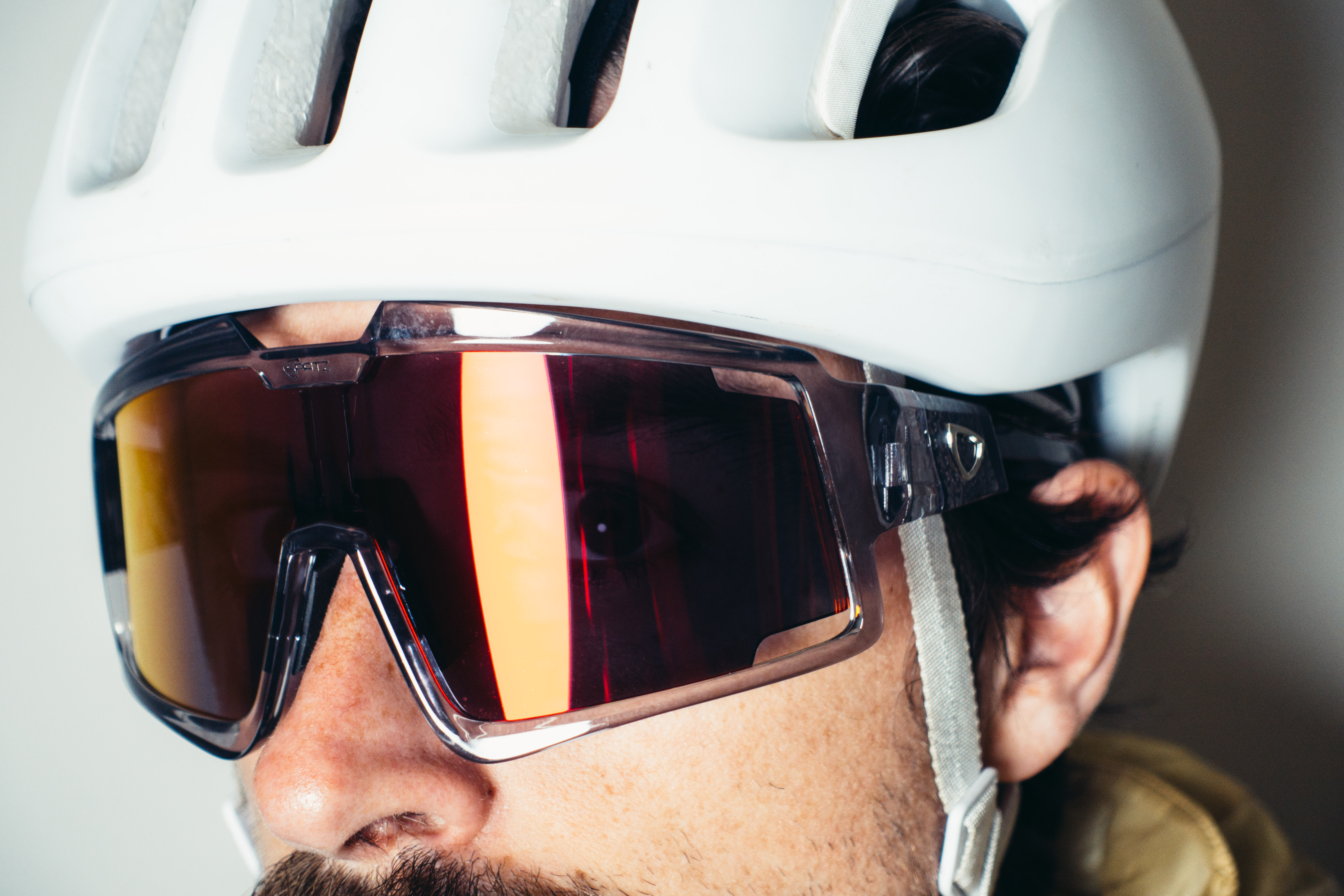

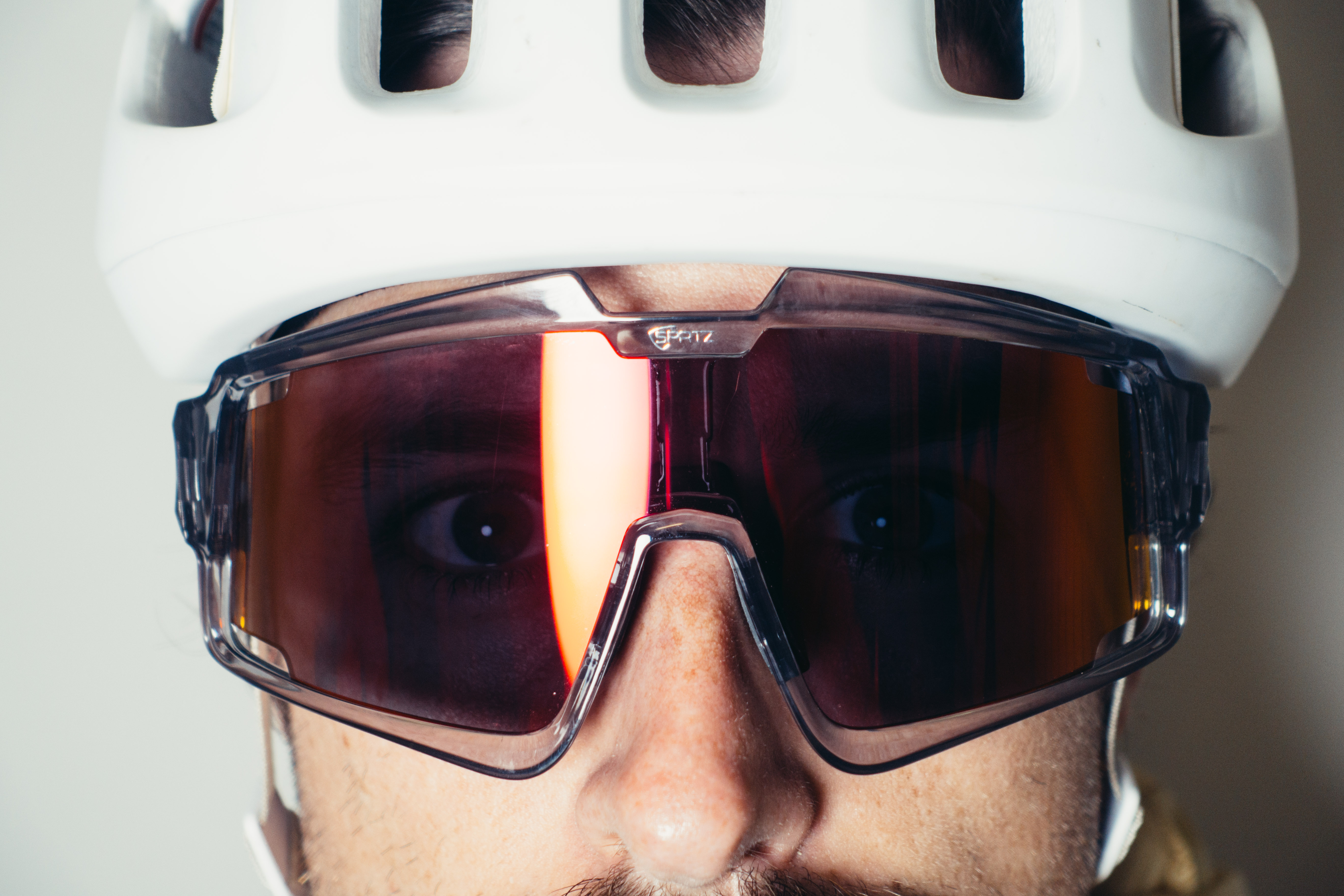

Performance
The main lens is fine. It’s good enough in full sun and performs OK in low light but it’s certainly not going to trouble the big players like the POC Clarity lenses or the Oakley Prizm range for performance. The photochromic lens though is excellent, and from my point of view, you should probably think of these as a photochromic set of glasses. Swapping the lens, incidentally, is easy enough. The sturdy frames don’t make it the most easy, but the lenses do just pop out. One thing to be aware of is if you’re pushing the glasses back up your face or into your helmet vents it’s best to push the frames as you can pop one side of the lens out if you push it.
The photochromic lens however is excellent. The purple hue does go some way to making things feel a little warmer, but more than that it seems to increase the contrast a touch, something that is often lacking in ‘plain’ photochromics. In low light, this is a benefit. The lenses go surprisingly dark even under heavy clouds, but I only really noticed this looking back at pictures; at the time I actually assumed they were essentially still clear.
The size of the Shield glasses does lend them well to winter use - more coverage means less rain hitting your face. What the pictures don’t show you is that they actually sit noticeably further from your face than most other cycling glasses, and so there is significant airflow in behind them. It’s not quite enough to become bothersome like it is with the Oakley Kato, but it does mean they resist fogging very well.
It’s actually feels akin to viewing the world through a windscreen. The little extra distance means you do feel you are looking through a pane, rather than simply looking, but as ever with the qualms I have with decent glasses it’s only really when I concentrate on it.
I do not have a massive head, but I did often find the Shield started to foul on the brow of my helmet. I couldn’t actually wear them at all with the Trek Ballista, so if you are a small-headed person then I would suggest these aren’t for you. This brow-bouncing, coupled with the fact the nosepiece isn’t that squishy, meant I felt some discomfort at the bridge of the nose after moderate riding times.

Value
In the context of modern cycling glasses, the RRP of the Spatz Shield (£164.99 or approx. $207) is very reasonable. It’s about the high end of mid-range, and for that, you get a lot in the box, and build quality that is among the very best on the market.
Given the versatility offered by the combo of the sun lens and a decent photochromic, you’re basically covered for every eventuality, so I do think these represent decent value.

Verdict
If you want a photochromic set of cycling glasses then these are about as good as you’ll likely find. They aren’t as good in the sun as others, and the size actually starts to bring some drawbacks, but as a first foray, they are excellent, particularly in winter.
I’ve stopped short of recommending them as the best cycling glasses for winter as I tended to reach for my 100% S3 with a clear lens, which sat closer to my eyes felt more protective, and was more comfortable too, but it was a close run thing.
Tech Specs: 100% S3 Sunglasses
- Price: £164.99/Approx. $207
- Weight: 44.6g (actual)
- Colour/lens Options: 4 (Red, Blue, Clear, Photochromic)







